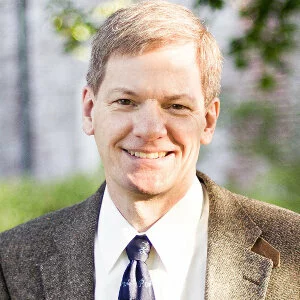The philosopher Alvin Plantinga argued in his book, Where the Conflict Really Lies: Science, religion, and naturalism (Oxford University Press, 2011), the central thesis: “There is superficial conflict but deep concord between science and theistic religion, but superficial concord and deep conflict between science and naturalism.”
Now, Plantinga wrote about “theistic religion,” but his main interest is of course in Christianity and Judaism. These faiths in turn rely on their readings of the Biblical passages, which may or may not bring in more of the “superficial conflict” that Plantinga writes about. My approach to reading Genesis generally supports Plantinga’s point.
Is a Spectrum Enough?
Here is something we do in order to clarify how differing perspectives relate to one another. In politics, for example, we speak of views as “conservative” (or “rightist”), over against “progressive” (or “leftist”). In Bible translation theory, we describe translations as “literal” (or “formally equivalent”) or “free” (or “functionally equivalent”). Most people recognize that these polarities (either-or) are not enough: any particular person’s political views will lie along a spectrum from more conservative to more progressive— and the same applies to Bible translations. But here I want to point out the obvious problem, namely real things are even more complicated than that. For example, a person might believe in protecting all vulnerable lives from conception to natural death, and at the same time also believe in protecting the environment — views that, at least in the United States, are counted as conservative and progressive, respectively. That is, the subjects “sanctity of life” and “environment” are separate variables.
When it comes to creation and science, we have the same kind of spectrum proposed. The variation from strict young-earth creationist (YEC) to full-blooded evolutionist might look like this:

This picture has important strengths, which is why people use it: Views lie along a continuum, and the categories are not discrete, airtight boxes… I find it difficult to locate myself on this spectrum.it recognizes that views lie along a continuum, and the categories are not discrete, airtight boxes. On the other hand, this kind of picture does not actually capture the nuances of different positions. For example, what is an “old-earth creationist” (OEC)?That was a problem, say, when I was selected as the OEC representative for the Four Views on Historical Adam (Zondervan, 2013) project: I cannot speak for all of them! Where does “intelligent design” fit in here? That project as articulated by, say, the Discovery Institute, crosses over these categories. I find it difficult to locate myself on this spectrum.
And what about Aristotle? He is basically naturalistic or Deistic, but also non-evolutionary (at least as I understand him).See my discussion of the relevant passage in Aristotle in Four Views on Historical Adam, 74. This difficulty leads to the insight: the classification system combines different dimensions, which need not be combined: “naturalism” in contemporary Western culture tends to be evolutionary, but the Aristotle example shows that this correlation is not necessary — it is not embedded in the very nature of things.
More Dimensions Please
Consider how we locate items in our experience. Let’s suppose a friend has invited me to join him for a meal at the restaurant of the Four Seasons Hotel in downtown Chicago. If I thought that simply finding the street address (120 East Delaware Place) were enough to get me there, I would go hungry: the restaurant is on the seventh floor, while the hotel rooms occupy the 30th through 46th floors of the skyscraper. That is, I need more than just the coordinates, which are two dimensions (longitude and latitude); I need a third dimension, namely height, so I know where to take the elevator. We could add a fourth dimension as well, namely time: if we were tracking an incoming aircraft, we would be looking at its coordinates and height as they change. The picture below gives a standard way of representing three-dimensional space:

The “dimensions,” or “axes” (labelled x, y, and z) allow variation along more than one line; and one can hold one dimension stable while varying the other two. This three-dimensional representation provides a metaphor for these subjects we are considering (politics, translation, creation views). The common spectrum picture assumes that we are adequately describing the differing views in terms of variation along only one dimension; but this one-dimensional approach actually collapses too many ideas into one axis — which means that it is inadequate. In my previous posts about “genre” (“RIP, Genre” and “An Early Retirement?”), I was arguing that the word genre covers too many dimensions (literary form, style, register, social function, etc.), and we need a fuller means of analysis. (A narrative, for example, can use a style somewhere on the range from high to low, and language on the range from technical to everyday to poetical — just as a song can do.)
The controversies that arise from discussing politics and Bible translation philosophy are as intractable as those that swirl around creation views — so I will confine my treatment here to just the one subject. What dimensions should we use in order to do full justice to the different kinds of perspectives on creation and science?
The Many Dimensions concerning “Evolution”
I’ll focus here on the question of evolution, and leave aside for the time being the question of how old the earth is. (After all, even many ardent young earth creationists accept a good deal of development of species from a smaller number of original kinds — say, from those that Noah brought on the ark.)
First, we can consider the degree to which one accepts the origin of species by way of descent with modification. An Aristotelian of the strongest sort would affirm the fixity of “species,” or at least of “kinds.”Aristotle’s word for “kind” seems to be narrower than, say, taxonomic family, though it may be wider than what we now call biological species. Many contemporary creationists, of both the old and young earth sorts, accept some level of development, while they also suppose that the Biblical “kinds” are some sort of boundary. Others will count it possible that all of the living things we currently see descend from the original one (or few) life forms.Using the words of Darwin’s closing paragraph in On the Origin of Species by Means of Natural Selection, or the Preservation of Favoured Races in the Struggle for Life (6th edition, 1872); Darwin actually spoke of the Creator having breathed life into these original forms.
A second dimension would be the kind of divine action involved. It can range from none (the naturalistic version), to the almost indistinguishable “hands-off” (strong Deism), to providential concurrence only (the strong-form theistic evolutionary position), to allowing for what we might call “extra infusions” of divine guidance and adjustment (of varying levels). Perhaps we might make the extreme end of this dimension occasionalism, in which there are no natural causal properties at all.
A third dimension deals with the discernibility of divine action. That is, a person might in theory allow that the Deity (or deities) could add things to the process, but leave no clear marks of such addition. Another might suppose that only some of the additions are discernible, while still another might argue that many of them are. Of course, these apply only to those who hold a model of divine action that allows for additions. Those who do not so allow might nevertheless consider some overall purposiveness in the process, discernible to humans (which seems to be the burden of Aquinas’ version of the argument from design),At least as Beckwith reads it: See Frank Beckwith, “How to Be an Anti-Intelligent Design Advocate,” University of St. Thomas Journal of Law and Public Policy 4, no. 1 (2010): 35–65. or not. And of course down at the Deist or naturalist end of this line, they will declare all such acts of discerning to be false positives. Christians who hold some form of “intelligent design” will vary from those who affirm only large-scale discernibility to those who also affirm the discernibility of smaller-scale extras.The movement called Intelligent Design (or ID, with upper-case letters) tends to shy away from referring to divine action, and focuses more on “scientific detectability” of features that require more than an undirected natural process, while I have preferred the more intuitive, and perhaps philosophical, term “discernment.”
We can imagine more diagnostic dimensions as well. For example, we may also consider the degree to which one’s approach to the other dimensions is a priori (say, based on philosophical or exegetical factors), as opposed to a posteriori (a conclusion inferred from one’s empirical study). Another example is when Christians often read Genesis as requiring them to affirm that the kinds set some sort of limit — and this is something they bring to their studies: which raises the question, how does the confirmation they think they are finding in their studies combine the empirics and the expectations? On the other hand, some people insist that the very nature of science requires a commitment to naturalism (even beyond the methodological sort), and will therefore not allow any possibility that anything might have been added to the process. Those who adhere to methodological naturalism for the sake of science must ask whether this limits their ability to tell the truth (as I believe that it does). If after study one concludes that the process was largely — or even entirely — “natural,” that is a different matter.
A further factor might be something analogous to what Thomas Kuhn called “commensurability,” namely the degree to which people can be argued into changing their perspective on some of these questions.Thomas Kuhn, The Structure of Scientific Revolutions (University of Chicago Press, 1970). No doubt there are other dimensions as well.
The so-called “Theistic Evolutionist”
By this sort of analysis, consider some who have been called “theistic evolutionists,” namely Benjamin Warfield, C. S. Lewis, and G. K. Chesterton. The name “theistic evolution” does not quite capture what they held to — unless we restrict the word “evolution” merely to the biological process of descent with modification, leaving open the question of how God was active. Here is what Lewis said on the subject:
Again, for the scientist Evolution is a purely biological theorem. It takes over organic life on this planet as a going concern and tries to explain certain changes within that field. It makes no cosmic statements, no metaphysical statements, no eschatological statements. … It does not in itself explain the origin of organic life, nor of the variations, nor does it discuss the origin and validity of reason. It may well tell you how the brain, through which reason now operates, arose, but that is a different matter. Still less does it even attempt to tell you how the universe as a whole arose, or what it is, or whither it is tending. But the Myth knows none of these reticences. … ‘Evolution’ (as the Myth understands it) is the formula of all existence.Lewis, “The funeral of a great myth,” in Christian Reflections, 88.
Here Lewis declares his theological indifference to the degree of descent with modification, together with his insistence on the allowability of divine action that adds to whatever process there is; and in the larger context of Lewis, he argued that, at the very least the production of human reason is one of those discernible places where addition has taken place (though he has not offered a scientific theory about what that might have looked like — wisely, as I judge). Further, since Lewis argued for it, I suppose he did not accept strict incommensurability. Lewis was much more reluctant to affirm a discernible purpose in the overall process.“There is, to be sure, one glaringly obvious ground for denying that any moral purpose at all is operative in the universe: namely, the actual course of events in all its wasteful cruelty and apparent indifference, or hostility, to life.” C. S. Lewis, “De futilitate,” in Christian Reflections (ed. Walter Hooper; Eerdmans, 1967), 69. Lewis’ statement reminds me of what Chesterton had said, in a book that Lewis admired (and I do, too):
No philosopher denies that a mystery still attaches to the two great transitions: the origin of the universe itself and the origin of the principle of life itself. Most philosophers have the enlightenment to add that a third mystery attaches to the origin of man himself. In other words, a third bridge was built across a third abyss of the unthinkable when there came into the world what we call reason and what we call will.G. K. Chesterton, The Everlasting Man (Doubleday, 1955 [1925]), 27.
Conclusion
This analogy of several dimensions illuminates what was otherwise dark to me. We need not see Genesis as denying, limiting, or affirming descent with modification, so long as by that we mean a scientific theory, open to examination and critique, which does not prejudge the nature of the process. The kind and discernibility of divine action are much more important, and a place in which conflict may really lie (to borrow a phrase): for example, when people wish to define both science and evolution in terms that import a form of naturalism into the definition; or when a reading of the Bible requires one to look for supernatural causation when the events are actually natural (as a good reading of the Bible would have confirmed) — We need not see Genesis as denying, limiting, or affirming descent with modification…after all, natural events are just as much God’s “direct” action as the “supernatural” ones.I have written on the subject of divine action in several places: for example, C. John Collins, The God of Miracles (Crossway, 2000); “How to think about God’s action in the world,” in J.P. Moreland, Stephen Meyer, Chris Shaw, and Wayne Grudem, eds., Theistic Evolution (Wheaton: Crossway, 2017). I think this explains why Paul Nelson’s recent post, “New Film Is Genesis History? Presents a False Dichotomy,” is right on target.
There may be reasons, scientific and philosophical (and even theological) to subject the various kinds of evolutionary theory to critical review: after all, there are several versions of the theories out there, and the idea of an impersonal and pointless process does not suit the data, either of biology or of the Bible (a point readily made, and summarized in the Witherspoon Institute’s recent post, “The Soul: Not Dead Yet”). But in my work on Genesis I have attended especially to what the faithful are supposed to be getting from that book; that is, on the perspective of faith, by which we are confident that all we see in the world comes from God and reflects his purposes for humankind. What kind of stance, then, should a good reader take in exercising dominion over God’s world? One of trust, and confidence, and stewardship, and bold embrace.








Comments
Be the first one to make a comment!